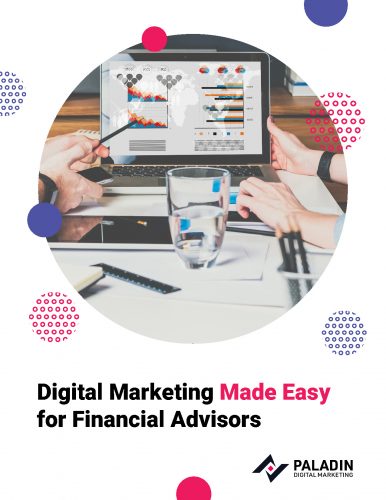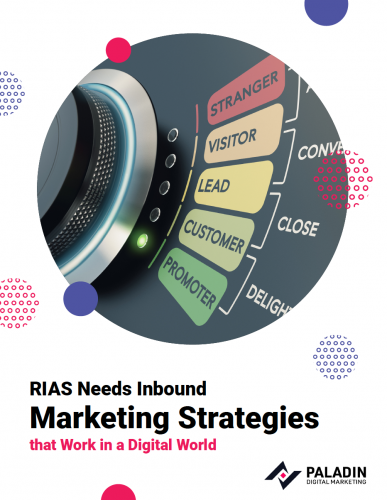Should Financial Advisors Use ChatGPT To Nurture Marketing Leads?

In today’s rapidly evolving digital landscape, financial advisor marketing created to attract and nurture leads is critical for driving business growth. As the world becomes more interconnected, harnessing the power of cutting-edge technologies has become imperative for success in the financial service industry. One such technology that has garnered significant attention is ChatGPT, an advanced language model developed by OpenAI.
Financial advisors, at the forefront of their industry, need to embrace digital marketing strategies to engage with their target audiences more effectively. Inbound marketing, a methodology centered around attracting and nurturing leads through high-value content, has emerged as a powerful tool for financial advisors to help establish themselves as thought leaders in their digital realms. By leveraging inbound marketing, advisors can position themselves as trusted authorities while building credibility and producing leads, and clients.
Enter ChatGPT—a relatively new AI-powered chatbot capable of simulating human-like conversations. This innovative technology has the potential to revolutionize the way financial advisors interact with prospective clients, providing personalized and real-time assistance throughout the customer journey. With ChatGPT, financial advisors can leverage its advanced language processing capabilities to understand and address the unique needs of each lead, delivering tailored solutions and timely recommendations.
Moreover, by integrating ChatGPT into their digital marketing strategies, financial advisors can optimize their online presence in search engines like Google. By incorporating targeted keywords such as “financial advisor,” “retirement planner,” and “wealth manager,” advisors can enhance their search engine rankings and attract a wider audience.
We will cover the following AI-driven financial advisor-nurturing topics in this article.
- How does a financial advisor lead differ from a prospect?
- What is a productive nurturing strategy for financial advisor leads?
- How does Chatgpt impact the nurturing process of financial advisors?
- What is the number one goal for nurturing financial advisor leads?
- How important is digital marketing when nurturing financial advisor leads?
- How does AI impact the email marketing practices of financial advisors?
- Why is it beneficial for a financial advisor to be considered a thought leader?
How Does a Financial Advisor Lead Differ From a Prospect?
 Leads are investors who have submitted their contact information to financial advisors. So, what are the key characteristics that cause more investors to become leads, prospects, and revenue-producing clients?
Leads are investors who have submitted their contact information to financial advisors. So, what are the key characteristics that cause more investors to become leads, prospects, and revenue-producing clients?
The more important characteristics of a lead include:
- Leads should have genuine financial needs or problems that cause them to seek financial advisors. This could be a need for retirement planning, investment advice, tax planning, or debt management, among others.
- Leads should meet certain criteria, created by financial advisors, that convert investors into viable leads. For example, investors meet the minimum asset requirements of financial advisors.
- A lead should provide their contact information, such as name, email address, and phone number, allowing the financial advisor to follow up and start the information-sharing process.
Now, let's address the difference between a lead and a qualified prospect:
A lead is an individual or organization that has shown interest or demonstrated potential to become a customer or client. The foundation of the initial relationship is the sharing of the investors’ contact information.
Or, the new leads may share their contact information to obtain eBooks on important financial advisors’ websites. It is reasonable to assume the investors expect to be contacted when they submit their contact information.
A prospect, on the other hand, is a lead that has been contacted and mutual interest (meeting each other’s requirements) was established. For example, prospects meet specific financial advisor criteria that make them more likely to become actual clients.
At the same time, the financial advisor has conducted a more detailed analysis of the investors’ financial situations, needs, and goals, and determined that they are a good fit for the advisors’ services.
For these reasons, prospects are considered more promising than leads and are typically prioritized for follow-up and conversion into clients.
What is a Productive Nurturing Strategy For Financial Advisor Leads?

A well-thought-out nurturing strategy is crucial for financial advisors to build strong relationships over periods of time with leads and prospects. Part of the nurturing process is to establish credibility and trust, which creates a competitive advantage when investors start interviewing financial advisors.
Following are a few key elements that contribute to a successful nurturing strategy.
Financial advisors send out newsletters, market insights, or personalized advice, on a scheduled basis to their leads and prospects. This not only displays their expertise, it also keeps clients updated on market trends and potential investment opportunities. Types of content include the following descriptions.
Creating educational content on a blog on planning, investment, retirement, and tax can provide clients with invaluable information. This content can also improve the website's SEO (Search Engine Optimization), making it easier for potential leads to find financial advisors.
Social media platforms like LinkedIn, Twitter, and Facebook provide opportunities to interact with clients and share timely news and insights. Social media may have limited potential for producing high-quality leads. Still, it can be a great way to build brand awareness, which is part of the marketing and nurturing processes.
Hosting informative webinars or seminars allows for more in-depth financial discussions with potential leads and prospects. This not only provides value to clients but also positions financial advisors as thought leaders in the financial service industry.
Personalized advice based on each client's financial goals, risk tolerance, and current circumstances helps build trust and loyalty at a high level.
Regular calls or meetings to discuss financial plans, adjust strategies, and address concerns will keep a financial advisor’s current clients engaged and reassure them of your dedication to their short as well as long-term needs.
Here are a few helpful resources for more information on these strategies:
- The Ultimate Guide to Email Marketing for Financial Advisors
- How SEO Can Boost Your Financial Advisory Business
- The Power of Social Media for Financial Advisors
- How Webinars Can Benefit Your Business
- Review of Financial Planning Software
Remember, nurturing is a longer-term strategy (marathons and not sprints). It's about building strong relationships and being your clients’ trusted advisors when they need financial information, guidance, or financial services.
How Does ChatGPT Impact the Nurturing Process of Financial Advisors?
 ChatGPT is a transformative tool in the world of financial advising. This cutting-edge AI technology aids financial advisors in nurturing relationships with clients and managing their portfolios more effectively. With ChatGPT, advisors can provide 24/7 assistance, helping them provide quick and accurate responses to lead, prospect, and client inquiries.
ChatGPT is a transformative tool in the world of financial advising. This cutting-edge AI technology aids financial advisors in nurturing relationships with clients and managing their portfolios more effectively. With ChatGPT, advisors can provide 24/7 assistance, helping them provide quick and accurate responses to lead, prospect, and client inquiries.
ChatGPT's deep learning capabilities (source) provide advisors with up-to-date financial insights and predictions. This resource boosts advisors' ability to make informed decisions on behalf of their clients, leading to enhanced customer satisfaction and trust.
By now, you should know AI can also automate routine tasks such as scheduling meetings and sending follow-up emails, thereby freeing up time for advisors to focus on more complex issues.
By using ChatGPT, financial advisors not only gain a competitive edge but also elevate the quality of their services. This revolution in financial advising is made possible by OpenAI, one of the leading AI research labs, known for their advanced language models (source).
What is the Number One Goal For Nurturing Financial Advisor Leads?
An important goal for nurturing leads and prospects for financial advisors is to build credibility and trust while establishing strong relationships with potential clients all at the same time. While optimizing for search engines and adding relevant backlinks can undoubtedly be beneficial for increasing online visibility, they are not the primary objectives for nurturing leads in the financial advisory industry.
The main focus should be on providing valuable and informative content that addresses the needs and concerns (pain points) of potential clients. Financial advisors should strive to demonstrate their expertise and establish themselves as trusted sources of information. This can be achieved by creating educational blog posts, hosting webinars or seminars, producing informative videos, and offering free resources like eBooks and Check Lists.
Digital marketing is critical in nurturing leads for financial advisors. Its services enable financial advisors to reach, engage, and convert prospects into clients. Following are some key ways financial advisors use digital marketing to nurture leads.
 Inbound marketing uses blogs, events, social media, and Local SEO to create brand awareness and attract new leads, prospects, and clients. Financial advisors can generate educational content that addresses their client’s needs and interests, leading to better relationships with clients, prospects, and referral sources.
Inbound marketing uses blogs, events, social media, and Local SEO to create brand awareness and attract new leads, prospects, and clients. Financial advisors can generate educational content that addresses their client’s needs and interests, leading to better relationships with clients, prospects, and referral sources.
Platforms like LinkedIn, Facebook, and Twitter enable financial advisors to interact with potential leads in a more informal, personal way. These platforms also allow sharing of insightful content that creates additional awareness for their brands.
Still, one of the most effective ways to nurture leads is email marketing which can provide targeted content and offers to prospects in a personalized manner. Segmenting the email list based on client needs and interests is crucial to ensuring high relevance and producing future engagements.
By optimizing their online content, financial advisors can ensure their websites and blogs have higher online visibility and are more easily discoverable by prospects using search engines.
Pay-per-click and online ads, especially on social media platforms, are cost-effective ways to reach and nurture, leads and prospects, particularly when ads are targeted based on relevant user data.
Webinars and other online events can effectively engage leads, providing a platform for direct interaction and important financial information.
An informative, easy-to-navigate, and professionally designed custom, lead generation website can significantly increase awareness, trust, and conversions (leads into prospects and prospects into clients). Generic, template-based websites do not have these same capabilities.
Following are a few critical links to information that is related to these points:
- Importance of Inbound Marketing
- Social Media for Financial Advisors: Best Practices
- SEO for Financial Advisors
- Email Marketing Guide
- Online Advertising Guide
By leveraging these strategies, financial advisors can efficiently nurture leads and prospects, efficiently guiding them through the sales funnel until they eventually become clients.
How Does Email Marketing Impact the Nurturing Processes of Financial Advisors?
 Email marketing is an important part of the nurturing process that facilitates conversions. Financial advisors can use emails to build trust, credibility, and relevance while informing clients about the latest planning and investment trends and opportunities by providing consistent, personalized, and informative content.
Email marketing is an important part of the nurturing process that facilitates conversions. Financial advisors can use emails to build trust, credibility, and relevance while informing clients about the latest planning and investment trends and opportunities by providing consistent, personalized, and informative content.
The advent of intelligent segmentation and automation in email marketing has been a game changer. Advisors can tailor their content based on clients’ needs, preferences, and financial goals. This personalized approach has a big impact on client engagement ratios and improves current client retention rates.
Moreover, by using email marketing analytics, financial advisors can measure the effectiveness of their digital communications. This data enables them to refine their approach based on what works best for their leads, prospects, and clients leading to more productive interactions.
In addition, it's crucial to abide by compliance regulations in this communications process. Fortunately, several email marketing tools provide built-in compliance features, ensuring advisors can easily maintain a compliance-friendly, communications strategy.
There is no question email marketing is a powerful tool for financial advisors. Leveraging its potential can enhance client relationships, nurture leads, and produce new clients for financial advisors.
Why is it Beneficial for a Financial Advisor To Be Considered a Thought Leader?
 Establishing yourself as a thought leader can enhance your professional reputation, build credibility, produce referrals, and attract new clients.
Establishing yourself as a thought leader can enhance your professional reputation, build credibility, produce referrals, and attract new clients.
Following are a few key ways financial advisors benefit when they become thought leaders.
As previously noted, financial advisors demonstrate expertise and in-depth knowledge when they act as thought leaders. This visibility builds trust and credibility with current and future clients. It stands to reason investors are more likely to seek financial advice from someone they perceive as an authority.
By sharing valuable insights and expertise, financial advisors can attract clients who are seeking financial guidance. Thought leadership content can showcase your unique perspective and problem-solving abilities, thereby positioning financial advisors as the go-to professionals in their niche. Moreover, consistent information that solves problems can help produce a competitive advantage that converts more prospects into revenue-producing clients.
Thought leadership activities, such as writing articles, publishing research papers, or producing social media posts, can greatly increase financial advisors’ visibility both online and offline. This exposure can lead to greater recognition with financial media who are always seeking quotes from excerpts.
By establishing yourself as a thought leader, you can differentiate yourself from competitors and create a distinct value proposition. This can lead to increased business opportunities, such as higher-value clients, strategic partnerships, and connections with media.
Being a thought leader may even allow financial advisors to contribute to advancing the standards of the industry in their communities. By sharing insights and perspectives, financial advisors can shape conversations on social media, influence policy decisions, and contribute to the development of best financial practices.
To optimize for search engines, make sure thought leadership content includes relevant keywords related to your services and target audience. Incorporate these keywords within articles, blog posts, and other online content. Additionally, consider implementing a backlink strategy by obtaining quality backlinks from reputable websites in the finance and business domains. These backlinks can improve search engine rankings and increase online visibility.
Remember, while optimizing content for search engines is important, it should not overshadow the primary goal of providing valuable information and building the reputation of your firm as a trusted financial advisor.
Updated 10/16/2021




